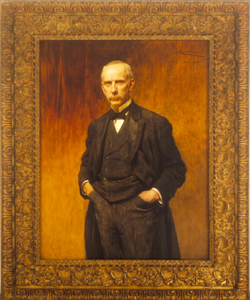Shortly after retiring as Governor of Iowa, Leslie M. Shaw (1848 - 1932) was appointed Secretary of the Treasury by President Theodore Roosevelt. His selection as Secretary was due to his championing the gold standard during the Presidential campaign of 1896 and his support of Roosevelt in 1900. Like his predecessor Secretary Lyman Gage, Shaw firmly believed that the Treasury should serve the money market in times of difficulty through the introduction of Treasury funds.

Taking several actions towards this end, Shaw bought back government bonds from the commercial banks that owned them, increased the number of government depository banks, and, in 1902, told the banks that they no longer needed to keep cash reserves against their holdings of public funds. The intended effect of these actions was to provide a more elastic currency, which would then respond to the needs of the market. Government intervention in the money market reached its height with Shaw. He resigned in 1907 to become a banker in New York.
About the Artist
French-born Theobald Chartran (1849 - 1907) began his study of art at an early age in Paris under Alexander Cabanel and later attended the Ecole des Beaux-Arts. He gained a reputation as a painter of historical tableaux and won a number of important commissions to paint French government buildings. After 1880, Chartran concentrated on portrait painting and became one of the favorite portraitists of elegant society. He came to the United States in 1893 to paint the Oliver H.P. Belmont family and thereafter made annual visits to New York, Pittsburgh, and Washington, D.C. until the end of his life. He is represented in the White House Collection by his group portrait depicting the signing of the peace protocol following the Spanish-American War and by a portrait of Theodore Roosevelt. His portrait of Leslie M. Shaw was painted from life in 1903, during Shaw's tenure as Secretary.
